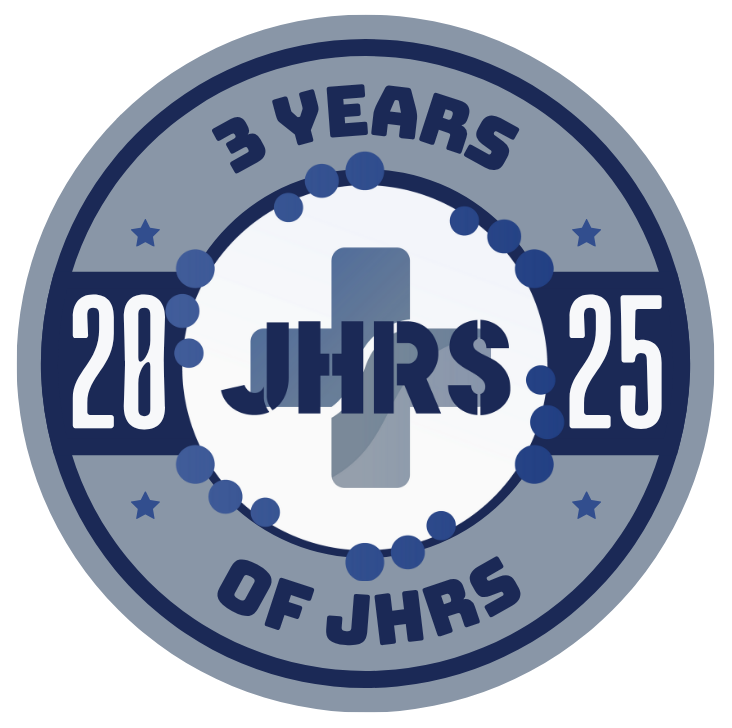Experiences of People with Motor Disabilities and Visual Impairments in Croatia with Assistive Technology
Keywords:
Quality of assistive technology services, people with visual impairments, people with motor disabilitiesAbstract
Introduction: Assistive technology (AT) is a term that encompasses assistive products, and the systems and services associated with them. Despite existing legislation and the fact that AT is an important part of this process, there are many barriers to access AT. The purpose of this study is to explore the differences in the evaluation of the assistive technology (AT) availability and the AT services quality in Croatia between people with visual impairments (IwVI) and people with motor disabilities (IwMD).
Methods: We created an online questionnaire about knowledge of AT, previous training and the need for further training, and the benefits and challenges regarding AT. In addition to the online questionnaire, we obtained qualitative data on AT use.
Results: The results show that most participants were not aware of AT before they started using it but also did not know about their rights to benefits and the purchase of AT. Participants reported financial problems in purchasing assistive devices and were forced to fund AT from their own resources or through donations. Many of the participants, regardless of the type of disability, had and still have problems with AT that are not adapted to their personal abilities and needs.
Conclusion: To improve access to AT and the quality of services, it is necessary to bring together professionals and experienced AT users who will disseminate accurate and trustworthy information to ensure the best cost-benefit ratio of AT for individuals with different disabilities.
Downloads
Metrics
References
Braun, V., & Clarke, V. (2006). Using thematic analysis in psychology. Qualitative Research in Psychology, 3(2), 77–101. https://doi.org/10.1191/1478088706qp063oa DOI: https://doi.org/10.1191/1478088706qp063oa
Brunes, A., Falkenberg, H. K., Berndtsson, I. C., & Heir, T. (2024). Use and underuse of mobility aids in individuals with visual impairment: A cross-sectional study of a Norwegian sample. Disability and Rehabilitation: Assistive Technology, 19(2), 266–272. https://doi.org/10.1080/17483107.2022.2081735 DOI: https://doi.org/10.1080/17483107.2022.2081735
Committee for Ethics in Science and Higher Education. (2006). Code of ethics of the Committee for Ethics in Science and Higher Education. https://mzom.gov.hr/UserDocsImages/dokumenti/StrucnaTijela/Eti%C4%8Dki%20kodeks%20odbora%20za%20etiku%20u%20znanosti%20i%20visokom%20obrazovanju.pdf
Croatian Health Insurance Institute. (2022). Decision on establishing the basic list of orthopedic and other aids of the Croatian Health Insurance Institute. Official gazette 153/2022. https://narodne-novine.nn.hr/clanci/sluzbeni/2022_12_153_2405.html
Croatian Institute of Public Health (2025). Report on persons with disabilities in the Republic of Croatia. https://www.hzjz.hr/wp-content/uploads/2025/10/Bilten_-_ROI_2025..pdf
D'Cunha, N. M., Isbel, S., Goss, J., Pezzullo, L., Naumovski, N., & Gibson, D. (2022). Assistive technology, information asymmetry and the role of brokerage services: A scoping review. BMJ Open, 12(12), e063938. https://doi.org/10.1136/bmjopen-2022-063938 DOI: https://doi.org/10.1136/bmjopen-2022-063938
Government of the Republic of Croatia. (2007). National strategy for equalization of opportunities for people with disabilities from 2007 to 2015. Official gazette 63/2007. https://narodne-novine.nn.hr/clanci/sluzbeni/2007_06_63_1962.html
Government of the Republic of Croatia. (2017). National strategy for equalization of opportunities for people with disabilities from 2017 to 2020. Official gazette 42/2017. https://narodne-novine.nn.hr/clanci/sluzbeni/2017_04_42_967.html
Government of the Republic of Croatia. (2021) The national plan for equalization of opportunities for people with disabilities for the period 2021-2027. Official gazette 143/2021. https://narodne-novine.nn.hr/clanci/sluzbeni/2021_12_143_2440.html
Jones, N., Bartlett, H. E., & Cooke, R. (2018). An analysis of the impact of visual impairment on activities of daily living and vision-related quality of life in a visually impaired adult population. British Journal of Visual Impairment, 37(1), 50-63. https://doi.org/10.1177/0264619618814071 DOI: https://doi.org/10.1177/0264619618814071
Kapsalis, E., Jaeger, N., & Hale, J. (2024). Disabled-by-design: effects of inaccessible urban public spaces on users of mobility assistive devices - a systematic review. Disability and rehabilitation. Assistive technology, 19(3), 604–622. https://doi.org/10.1080/17483107.2022.2111723 DOI: https://doi.org/10.1080/17483107.2022.2111723
Miles, M. B., & Huberman, A. M. (1994). Qualitative data analysis: An expanded sourcebook (2nd ed.). Sage Publications, Inc. https://vivauniversity.wordpress.com/wp-content/uploads/2013/11/milesandhuberman1994.pdf
Savage, M., Albala, S., Seghers, F., Kattel, R., Liao, C., Chaudron, M., & Afdhila, N. (2021). Applying market shaping approaches to increase access to assistive technology in low- and middle-income countries. Assistive Technology,33(sup1), 124–135. https://doi.org/10.1080/10400435.2021.1991050 DOI: https://doi.org/10.1080/10400435.2021.1991050
Smith, E. M., Huff, S., Wescott, H., Daniel, R., Ebuenyi, I. D., O’Donnell, J., Maalim, M., Zhang, W., Khasnabis, C., & MacLachlan, M. (2024). Assistive technologies are central to the realization of the Convention on the rights of persons with disabilities. Disability and Rehabilitation: Assistive Technology, 19(2), 486-491. https://doi.org/10.1080/17483107.2022.2099987 DOI: https://doi.org/10.1080/17483107.2022.2099987
Stančić, Z., & Pinjatela, R. (2023). Asistivna tehnologija iz perspektive stručnjaka (Assistive Technology from experts’ perspective). In M. Mirić & D. Miholić (Eds.), Asistivna tehnologija u 21. stoljeću - stanje i perspektive (Assistive technology in the 21st century: State and perspectives) pp. 45-70. Zagreb: University of Zagreb Faculty of Education and Rehabilitation Sciences https://www.erf.unizg.hr/_download/repository/erfunizg_platforma50plus_asistivna_tehnologija_u_21_stoljecu-primjena-i-perspektive_2023.pdf
United Nations. (2006). Convention on the rights of persons with disabilities. https://www.ohchr.org/en/instruments-mechanisms/instruments/convention-rights-persons-disabilities
United Nations. (2015) Transforming our world: The 2030 agenda for sustainable development. Resolution adopted by the general assembly on 25 September 2015. https://www.un.org/ga/search/view_doc.asp?symbol=A/RES/70/1(open in a new window)
United Nations. (2019). Disability inclusion strategy. https://www.un.org/en/content/disabilitystrategy/assets/documentation/UN_Disability_Inclusion_Strategy_english.pdf
University of Zagreb. (2009). Code of ethics. https://www.unizg.hr/fileadmin/rektorat/O_Sveucilistu/Dokumenti_javnost/Propisi/Pravilnici/Eticki_kodeks.pdf
World Health Organization & United Nations Children’s Fund. (2022). Global report on assistive technology. https://iris.who.int/bitstream/handle/10665/354357/9789240049451-eng.pdf?sequence=1
World Health Organization. (2024). Assistive technology. https://www.who.int/news-room/fact-sheets/detail/assistive-technology
World Health Organization. (2025). WHO assistive products priority list. https://www.who.int/news-room/events/detail/2025/06/09/default-calendar/assistive-products-priority-list-(apl)-open-consultations
Published
How to Cite
Issue
Section
License
Copyright (c) 2025 Renata Pinjatela, Sonja Alimović

This work is licensed under a Creative Commons Attribution 4.0 International License.























